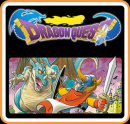HoloDust said:
Simple actually, since I see gyro aiming as something that standard classic controllers with gyro do very well - and that's (more or less) about it when it comes to gyro in them. They are still just a standard controllers that have gyro in them to augment some of the gameplay, but for full motion control play, they are just plain terrible or completely unusable. So for me that's just standard gameplay + some. On the other hand, Wiimote (specifically Wii Motion), Move, VR controllers...they are made to fully support motion gaming (especially in VR, with all the advanced trackings, body, fingers...) and are focused on completely different experiences than sitting and gyro aiming and thus are vastly superior for actual motion gaming. Yes, gyro aiming is technically a subset of motion gaming, but one that is very small subset and that was tried to be standardized first on PS3 (again, with no great success), without making it about full motion gaming that Sony later jumped in with Move, directly influenced by the success of Wii. Hopefully, this makes it clear why I see them as somewhat different, especially when it comes to who did first attempts at codifying them as standards. |
Now I see the issue, you have a very questionable opinion about the use of gyroscopes in motion based gaming. There just plain terrible or unusable? Really? Gyroscopes have bad usage in Wii remotes and Joycons (non-traditional controllers)? I don't see how you can come to that conclusion. If anything you are grossly exaggerating their usage in traditional controllers. What is normal about using dual thumbsticks while tilting or twisting a controller? I literally turn it off when using my pro controller because it can be grossly uncomfortable. I don't want to remove the option from you but acting like the best usage of gyroscopes are in traditional controllers is a wild take. Especially when clearly this can't be a popular opinion when Sony ditches them and Xbox doesn't offer them at all. Nintendo only pushes it because of Splatoon.
Gyroscopes best usage are definitely in motion based gaming and go extremely well with non-traditional controllers like the Joycons because I'm free to twist and tilt the controllers independently. Gyroscopes have great usage for sports based motion based gaming, tilting or twisting to emulate a tennis racket, or control my spin in bowling. Even gyroaiming with my Joycons feels natural because they are independent, I literally aim my joycons like wii remote because it feels natural. I personally would rather use gyroscopes for gestures in Call of Duty like maybe to roll when fully crouched?
Like seriously, this is why you are so interested in separating gyroaiming from motion based gaming, it's because you have a very strong opinion of gyroaiming. It clearly isn't that popular and gyroscope usage is far more popular in motion based gaming. Gyroscopes are used in multiple different ways including gyroaiming and motion based gaming. Which why me and Curl view it all under the same umbrella.
























































